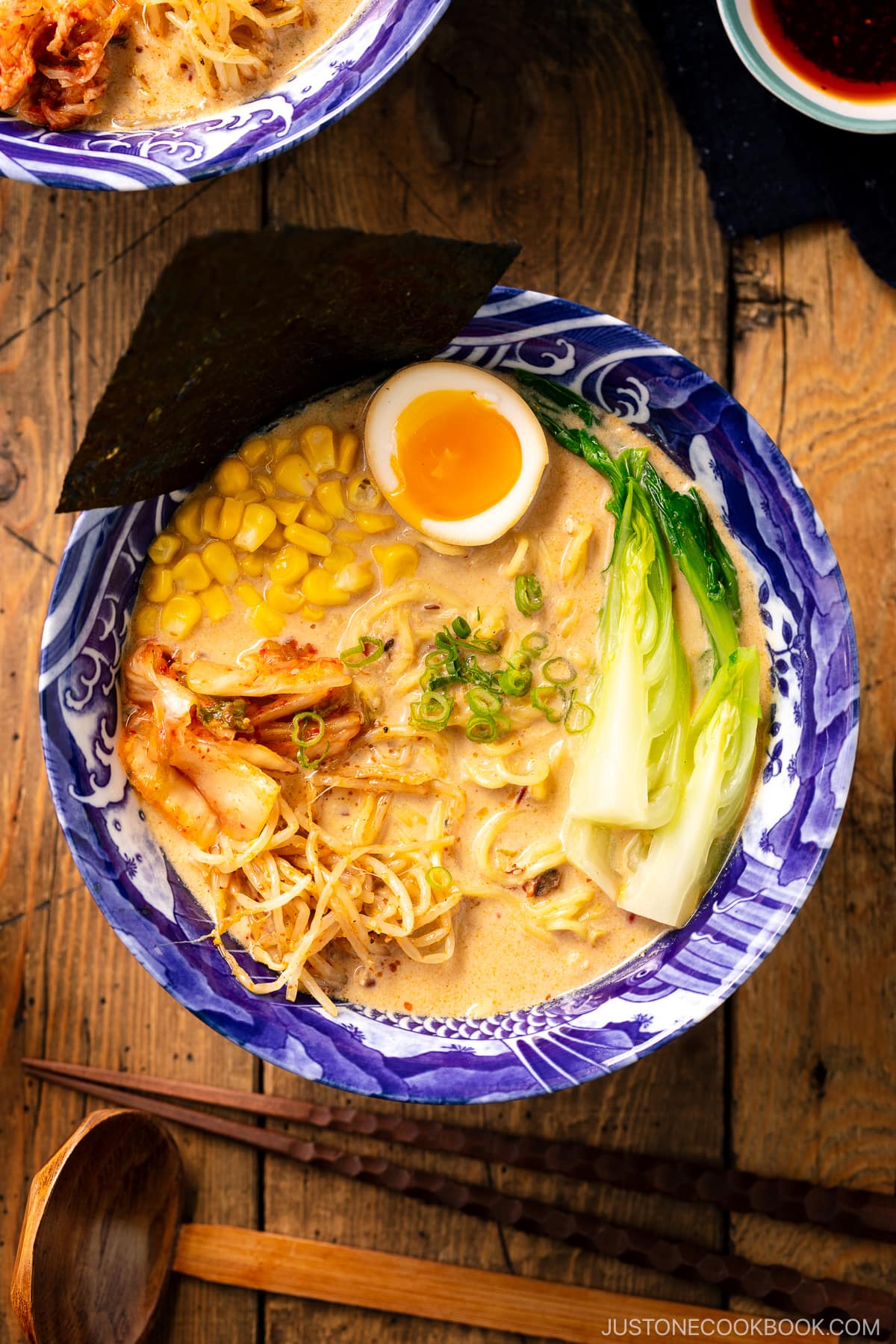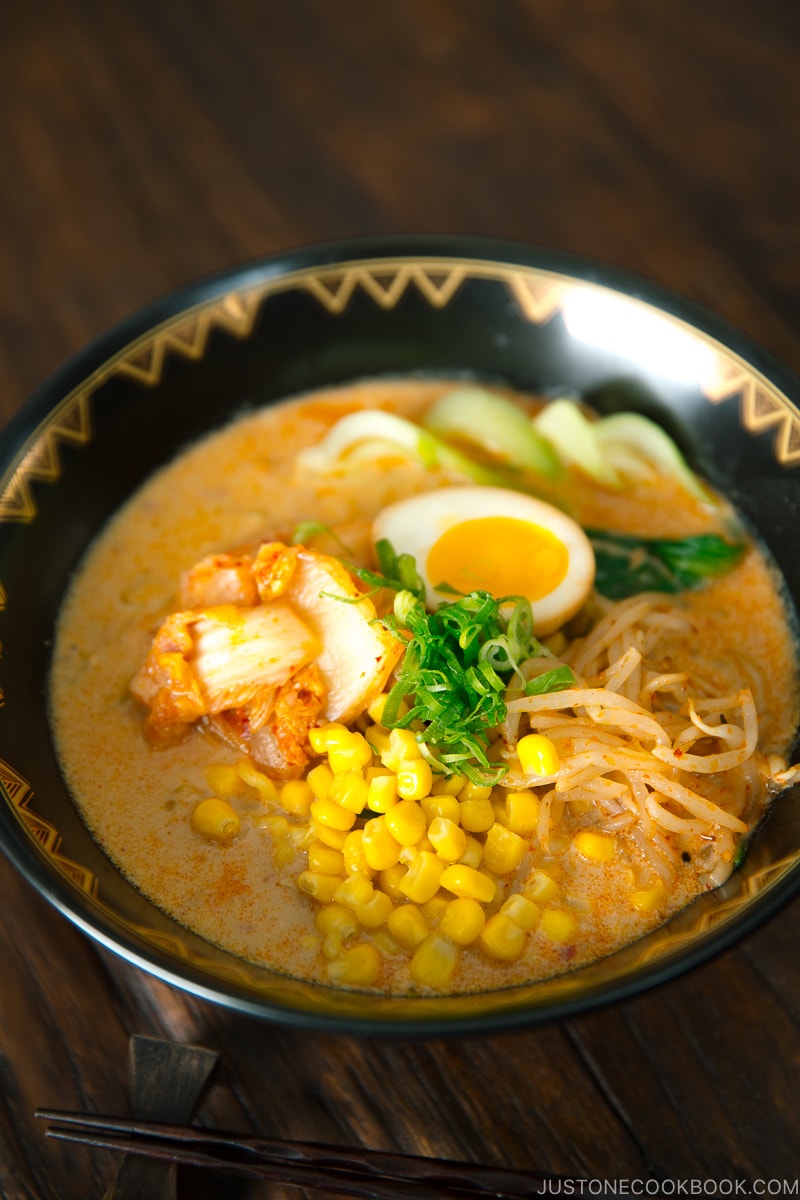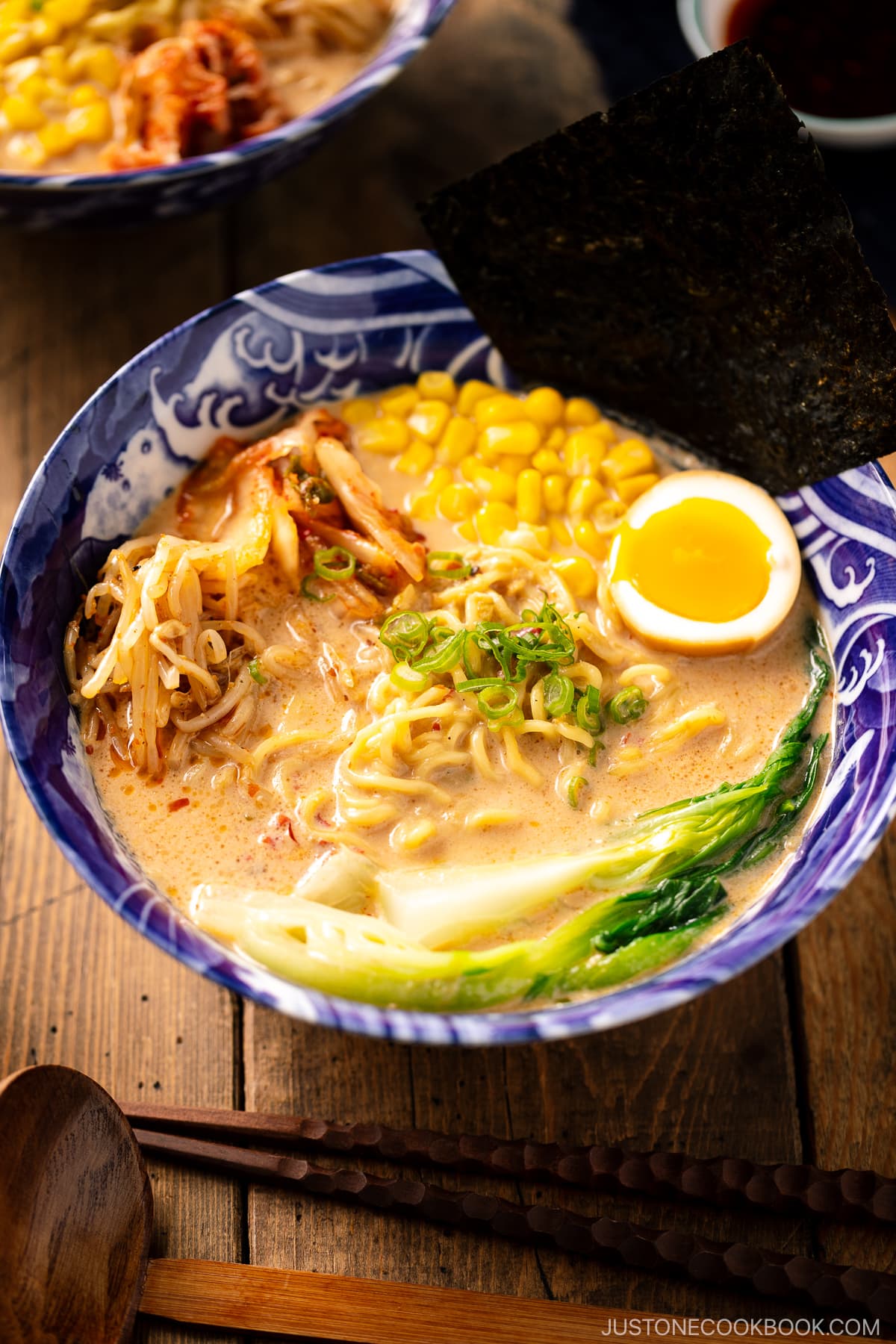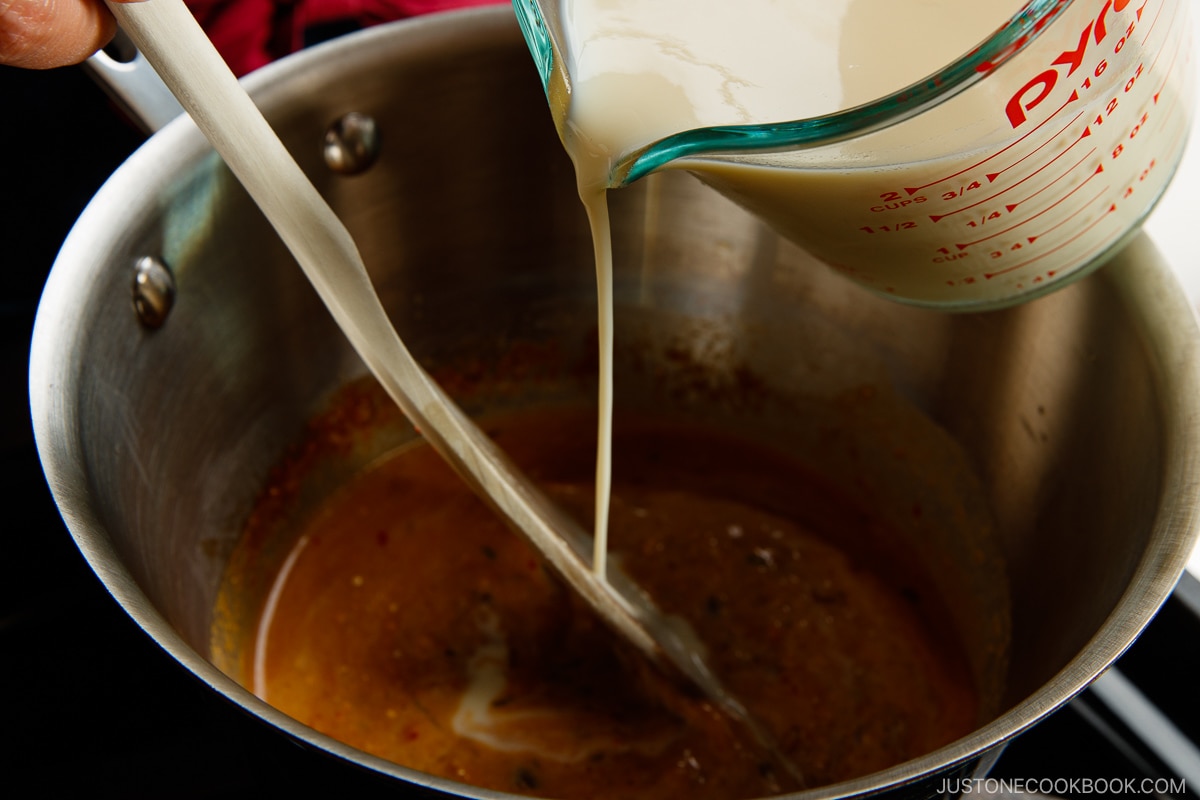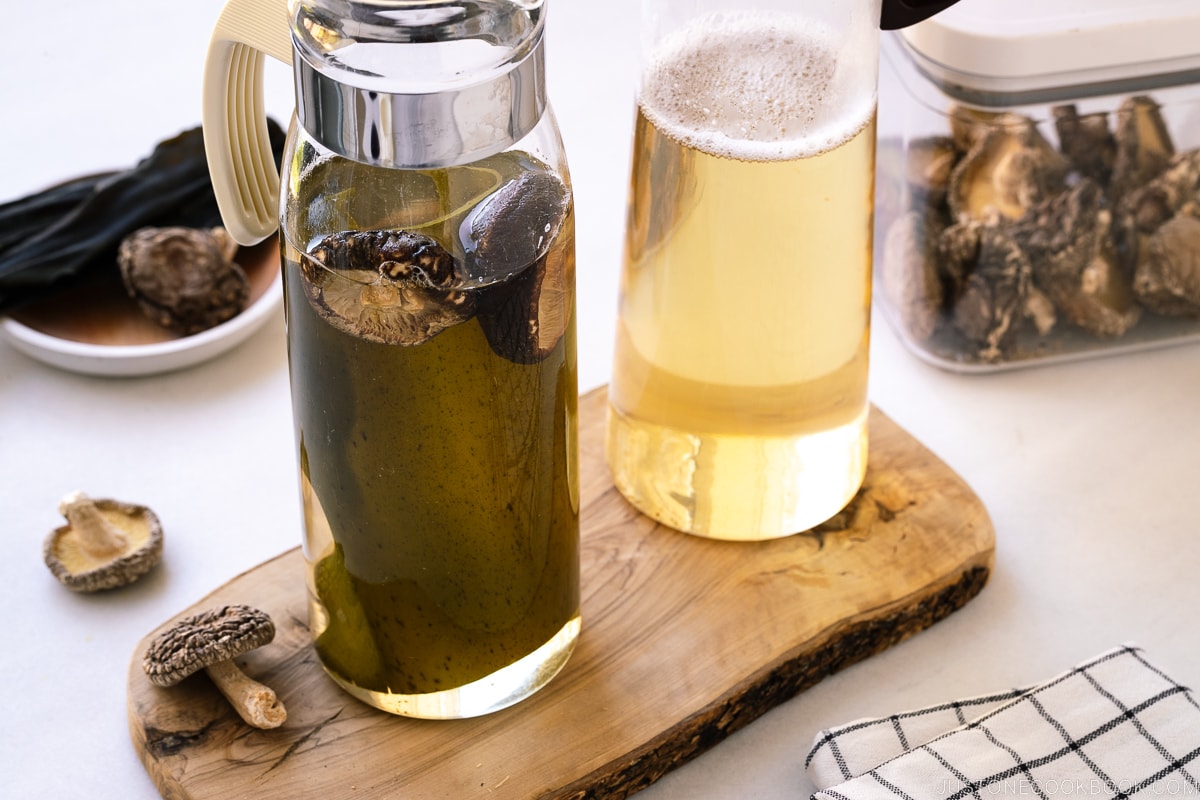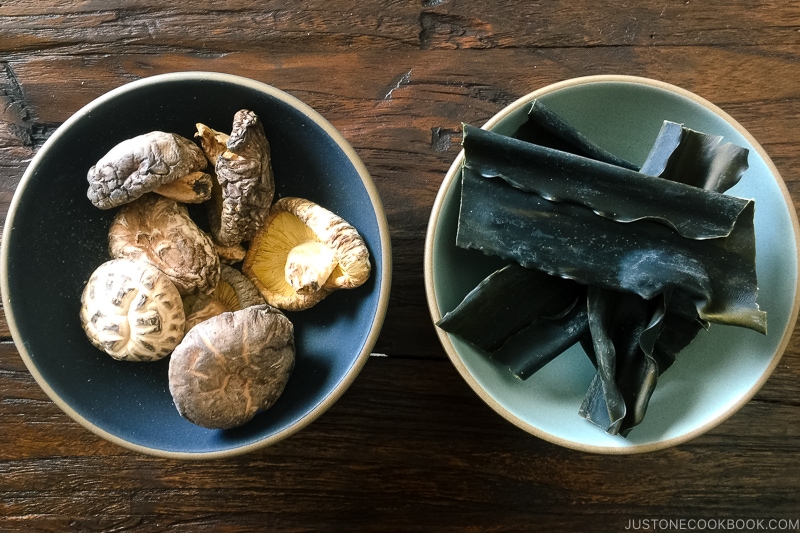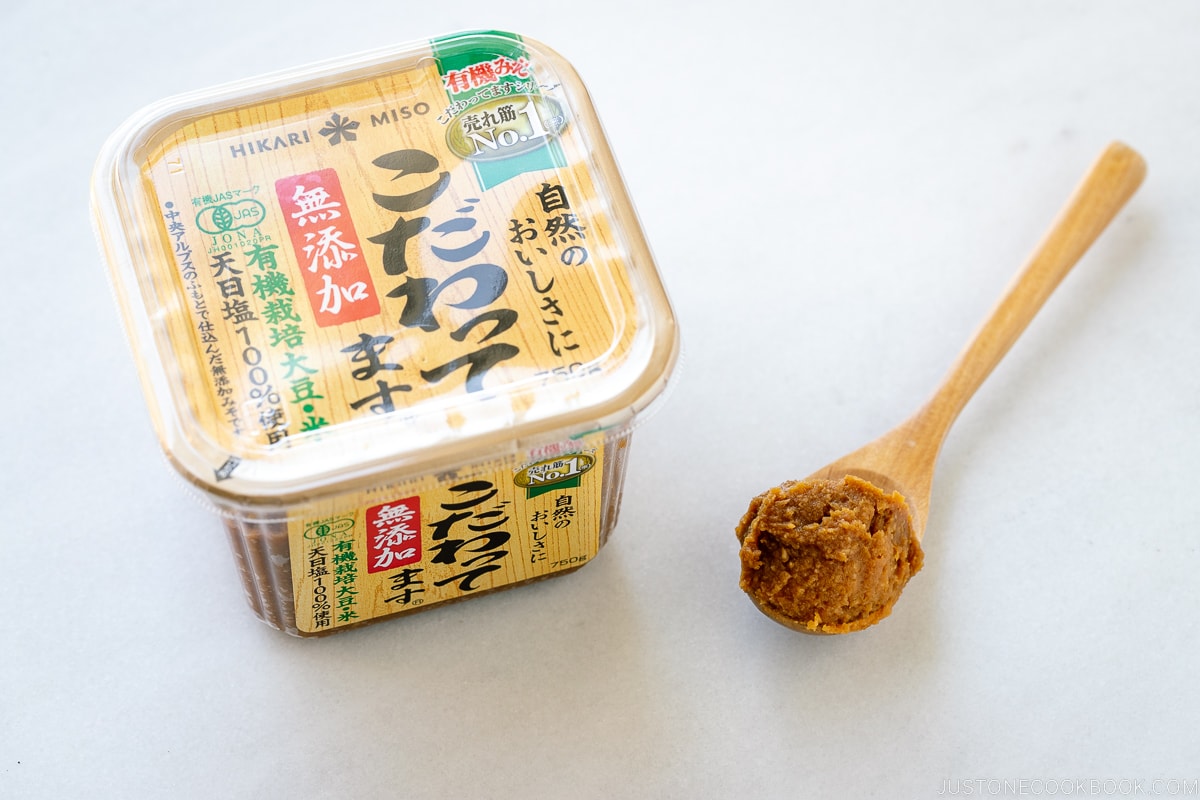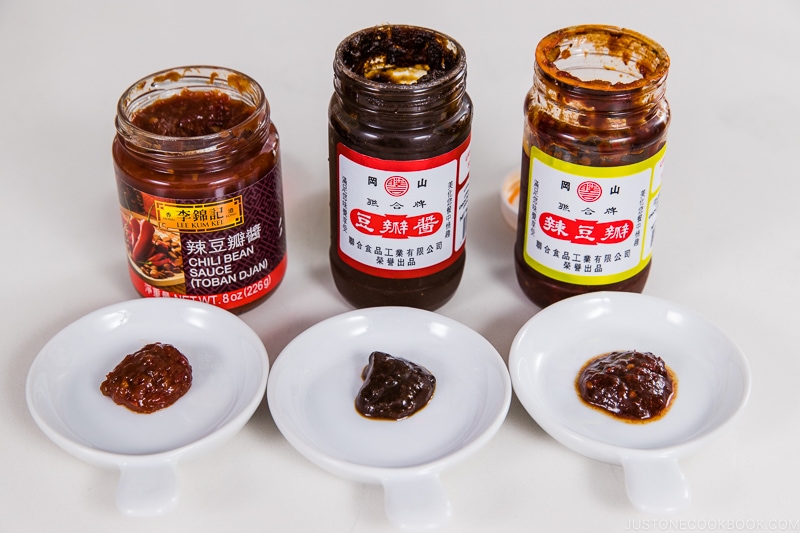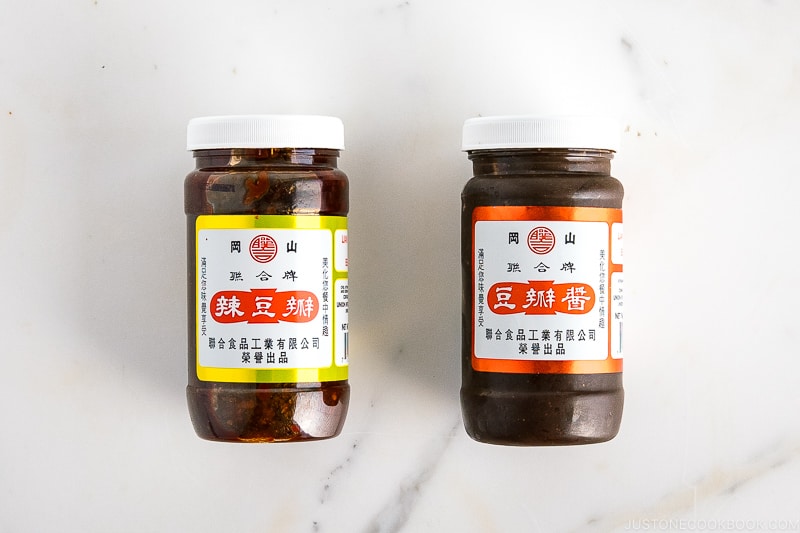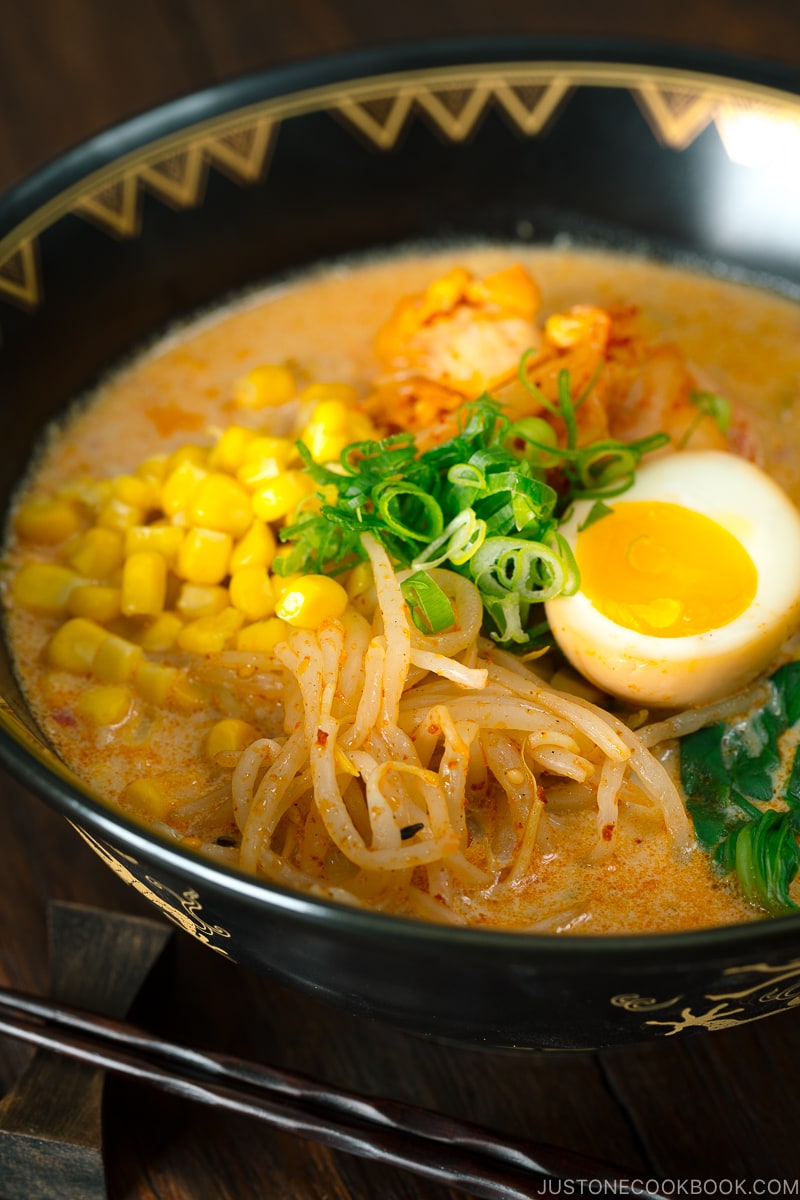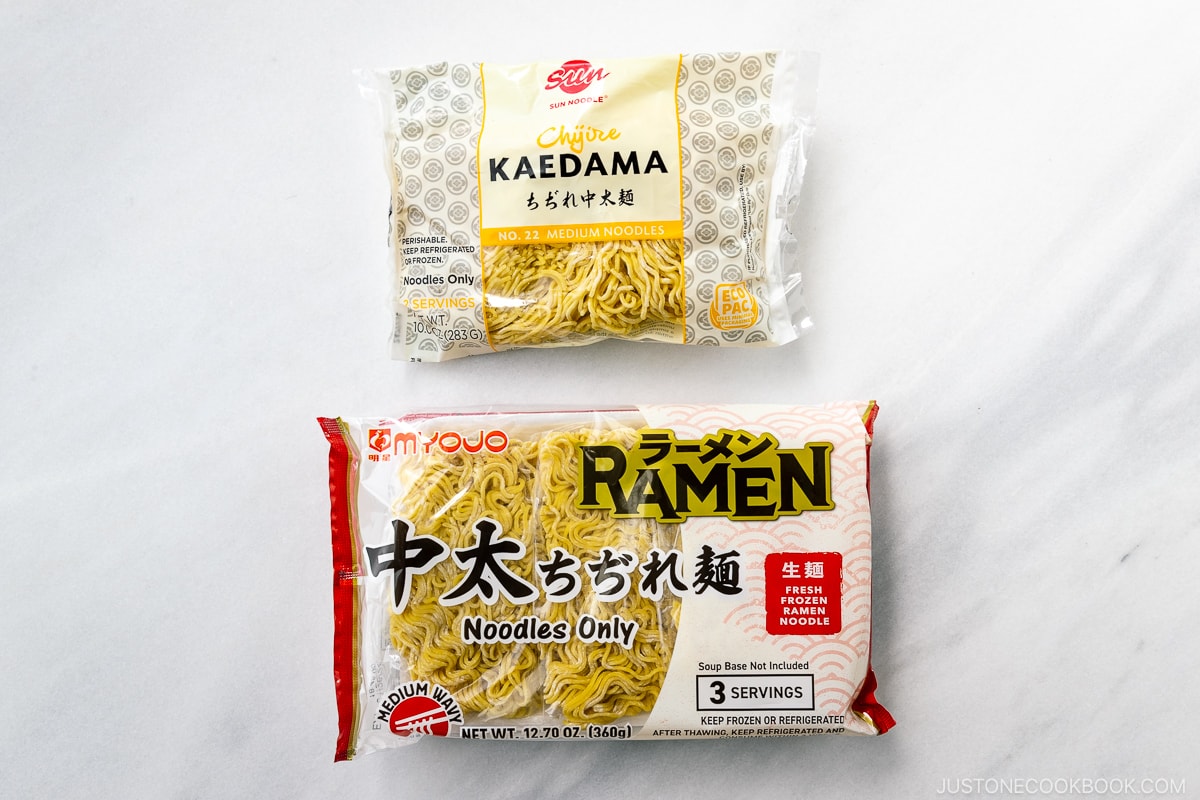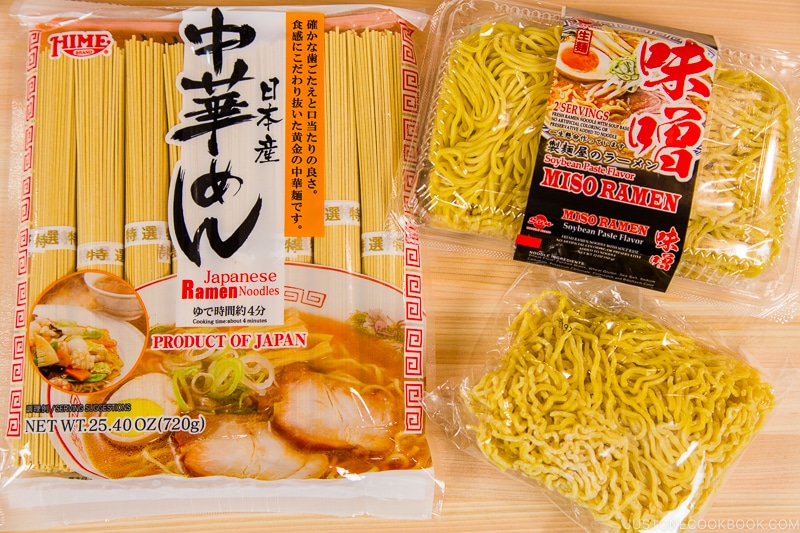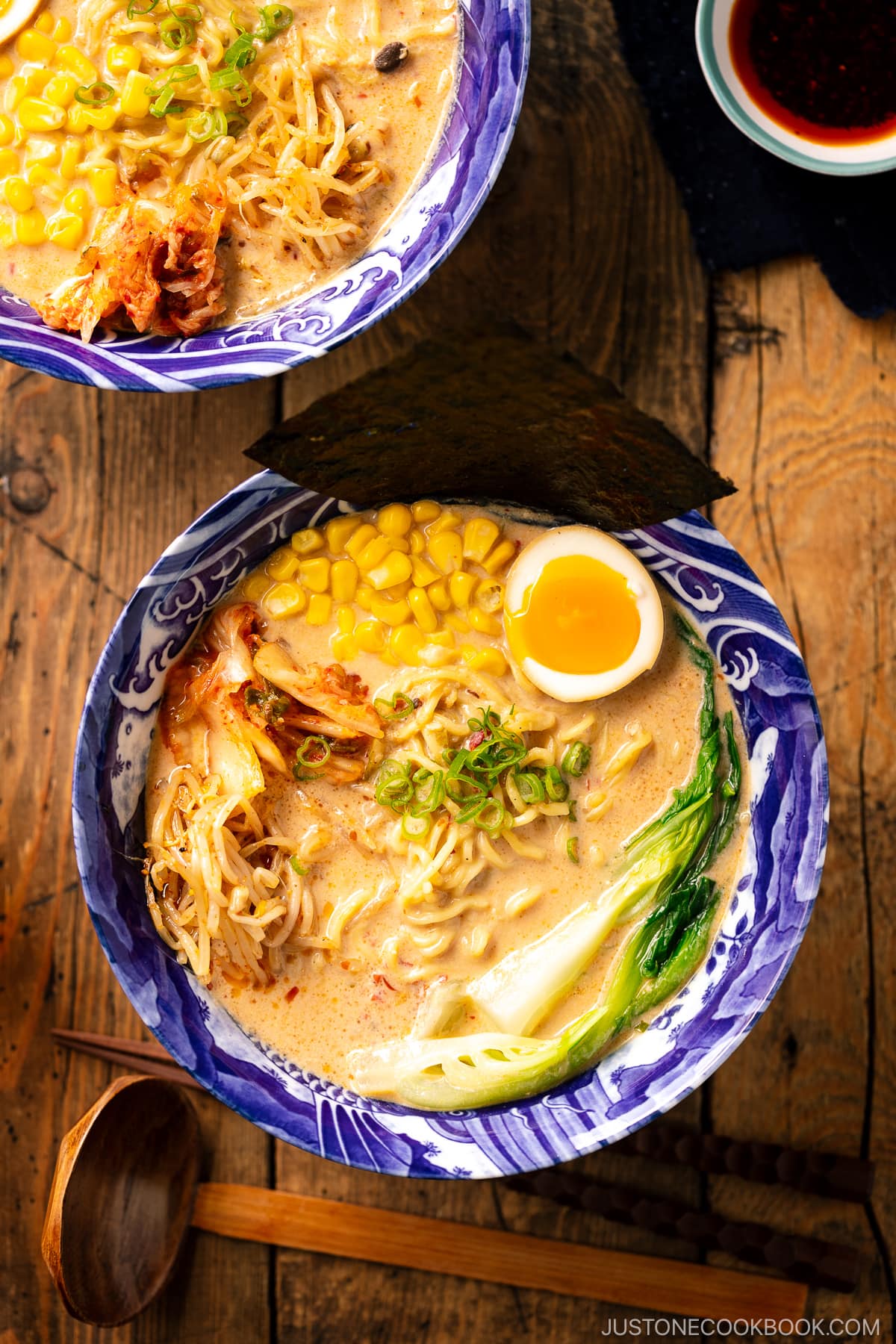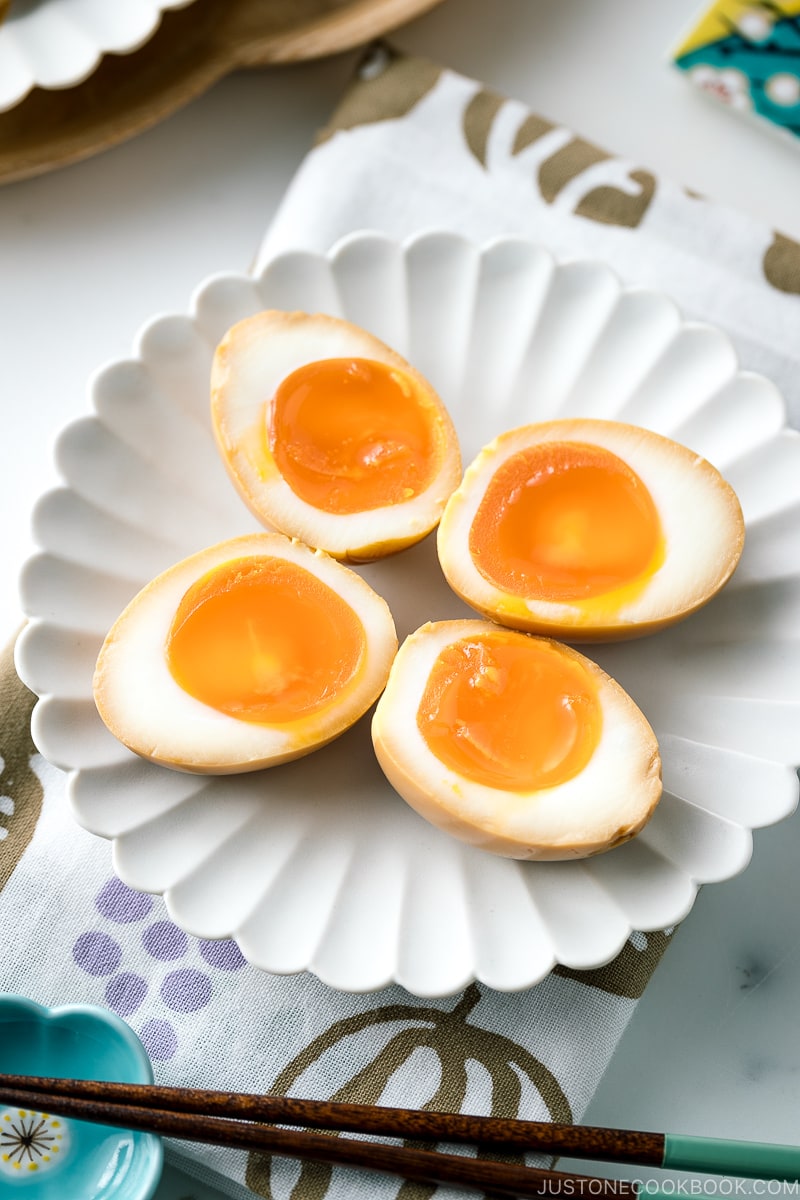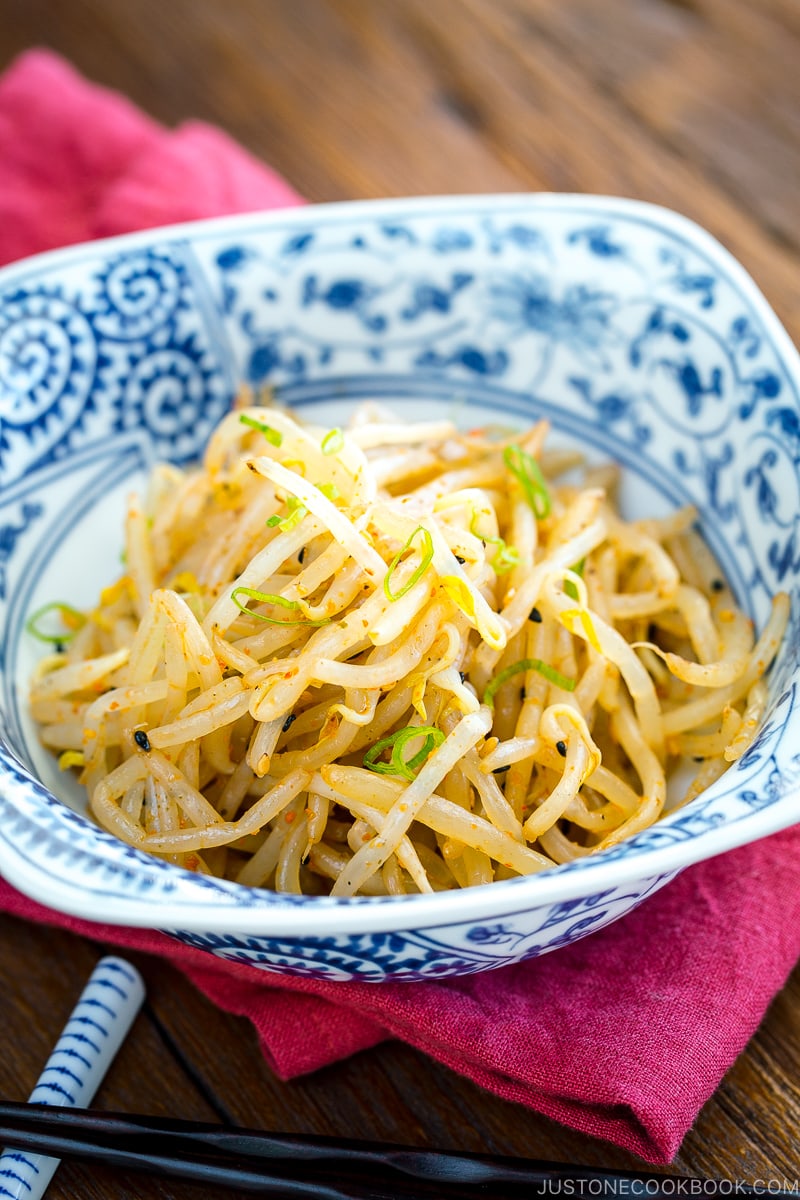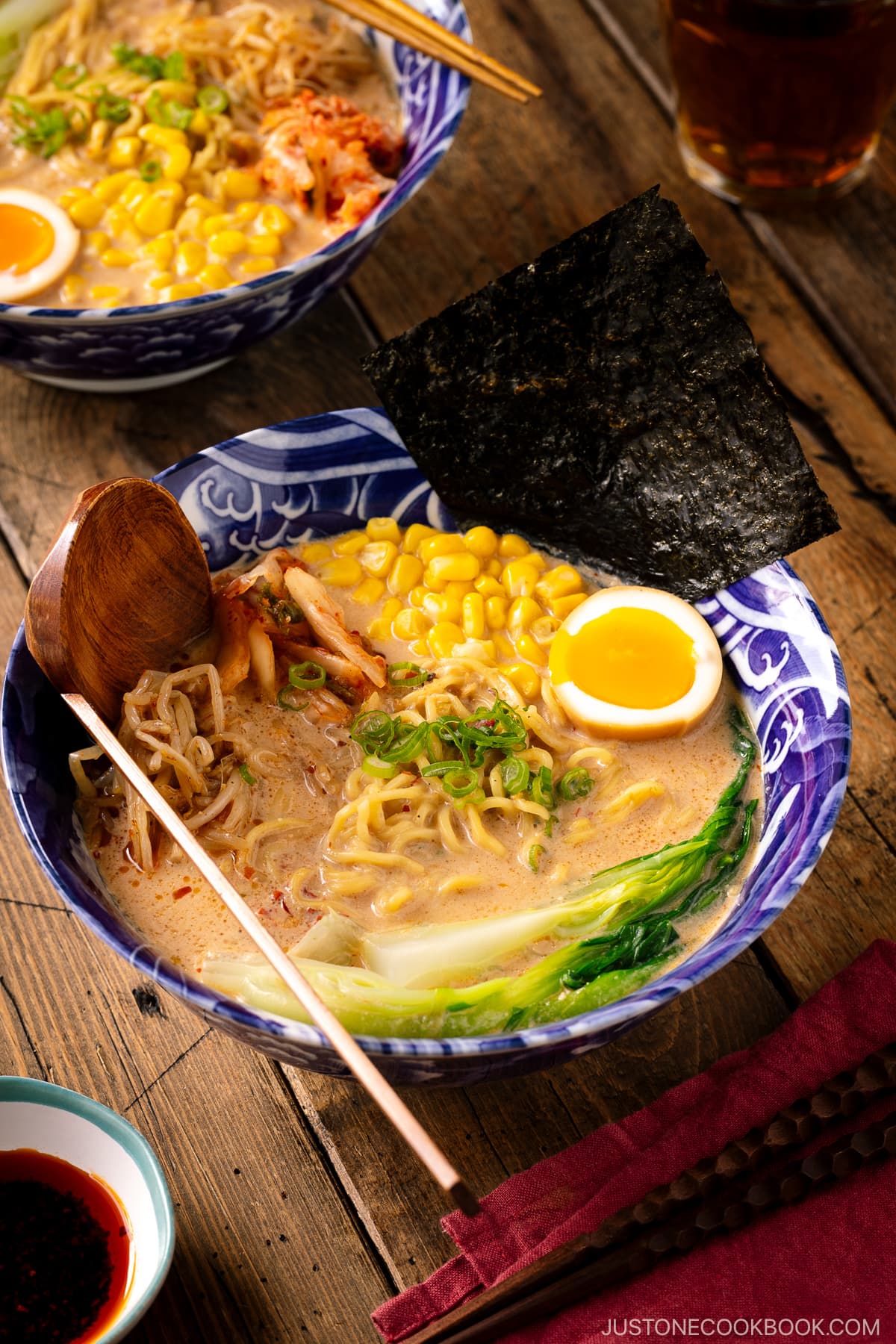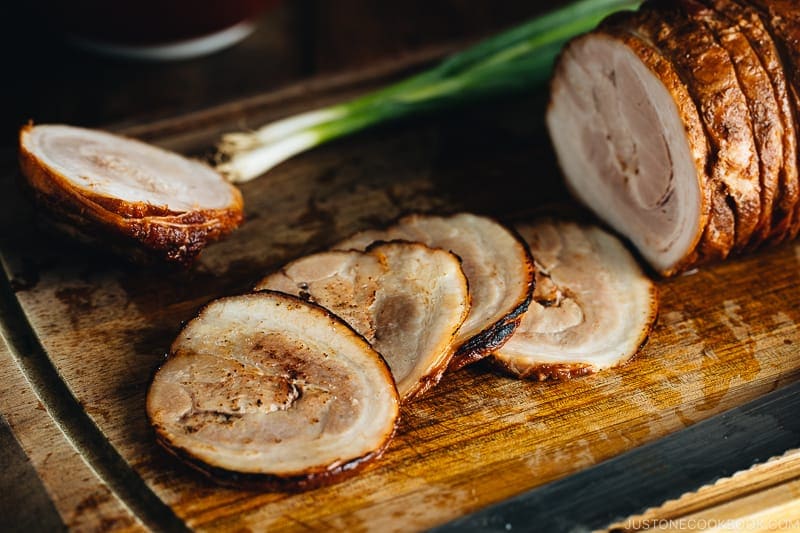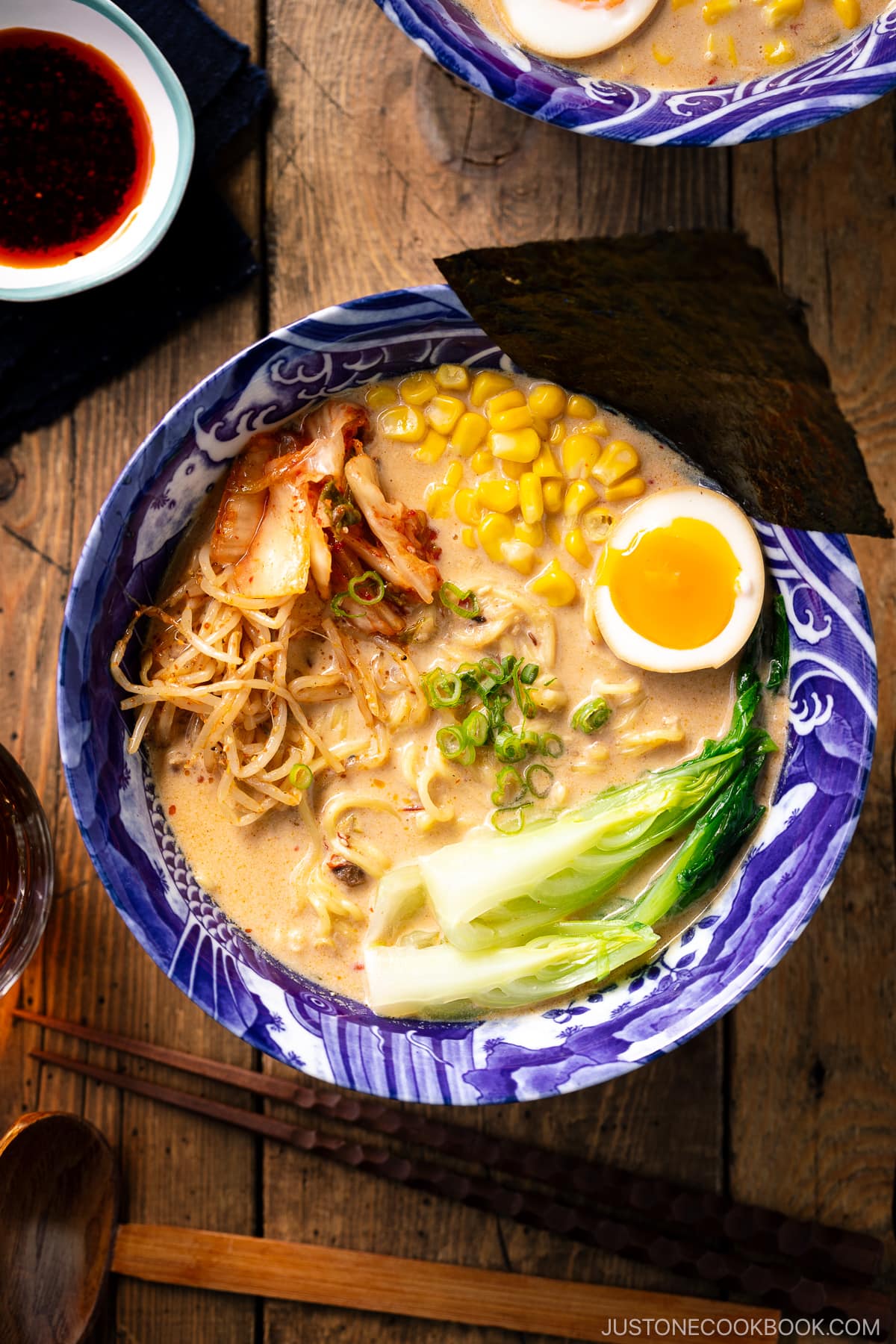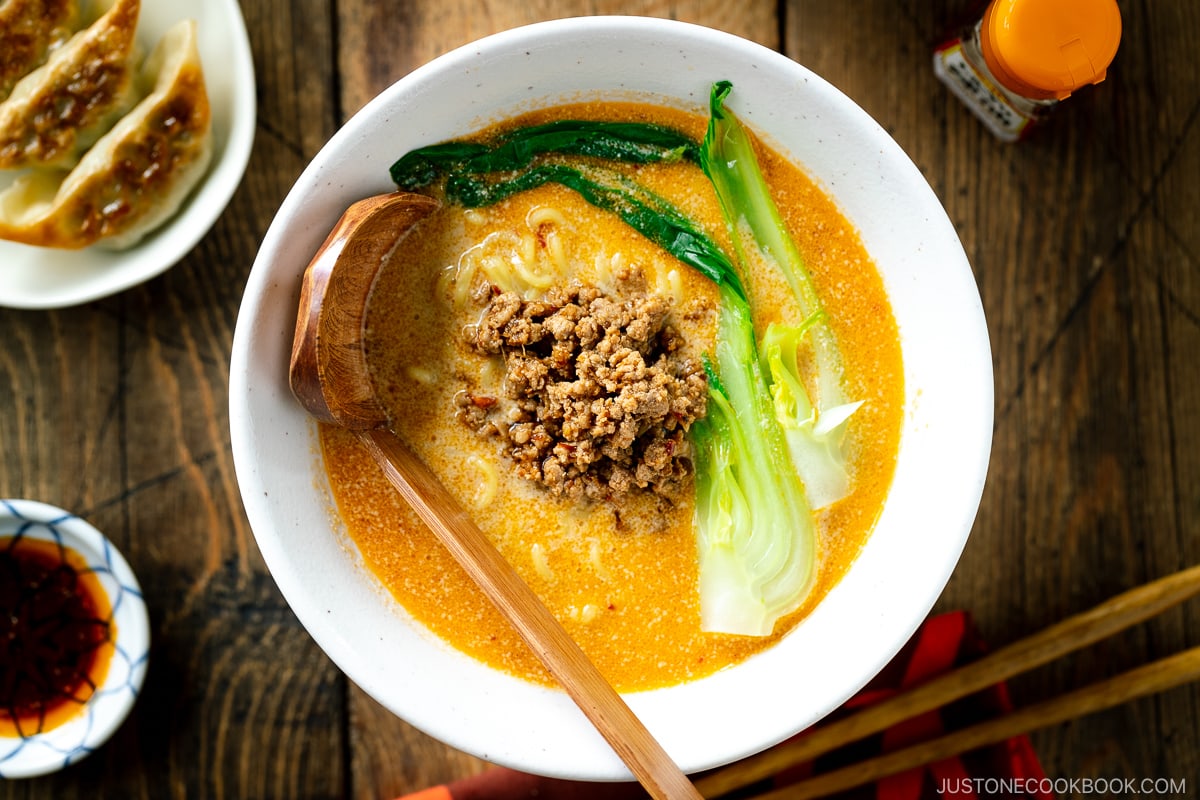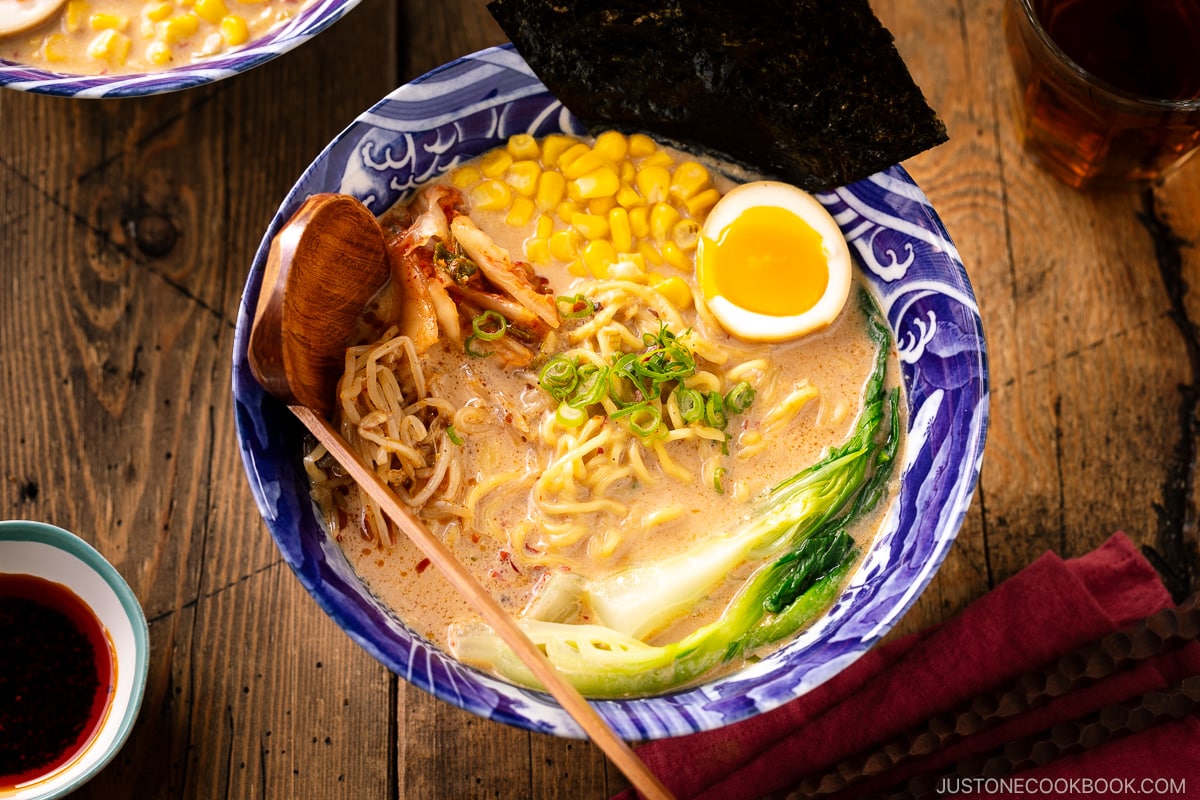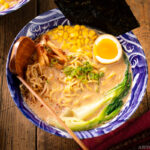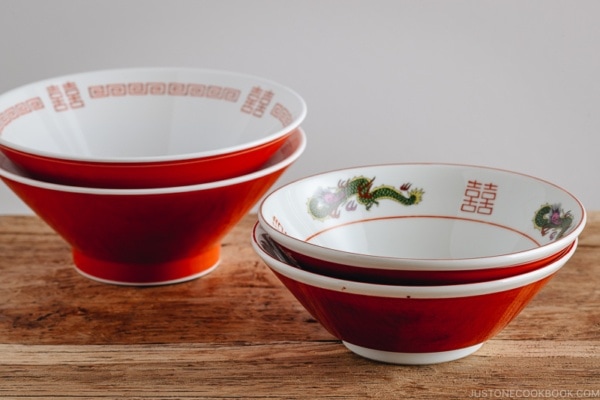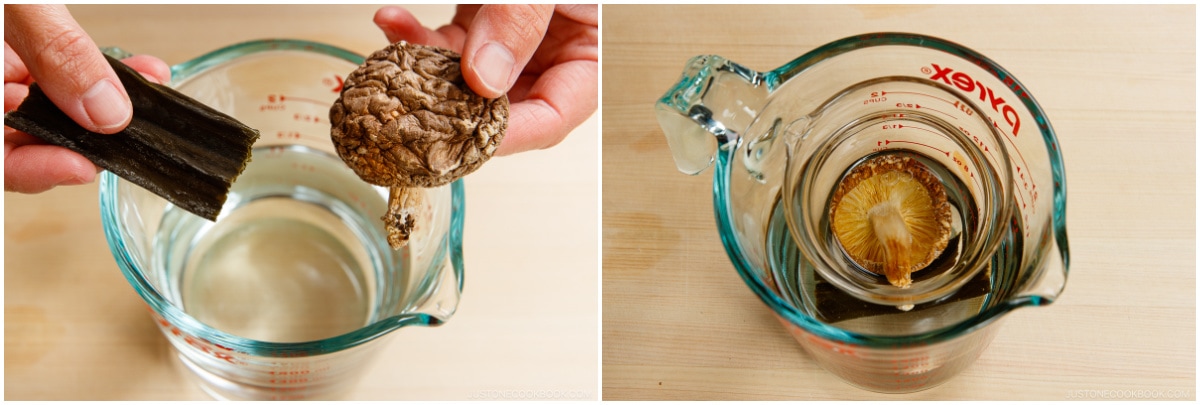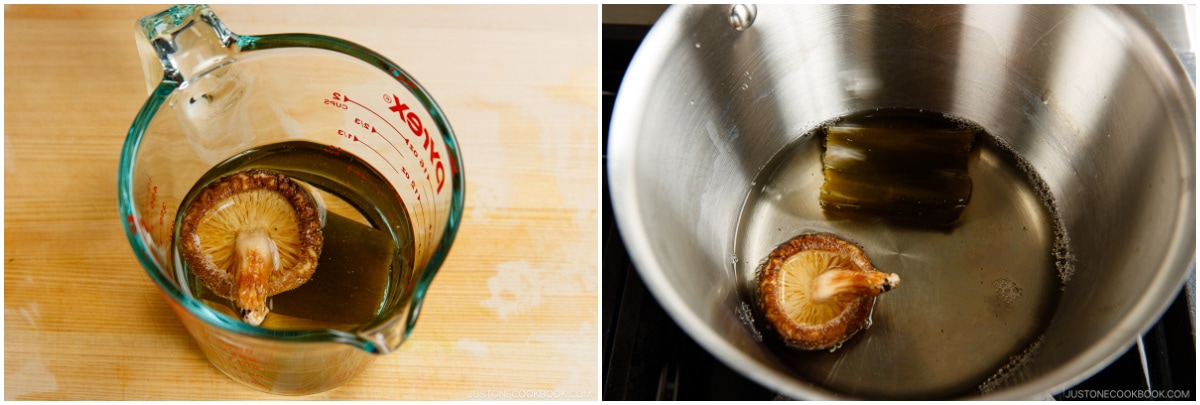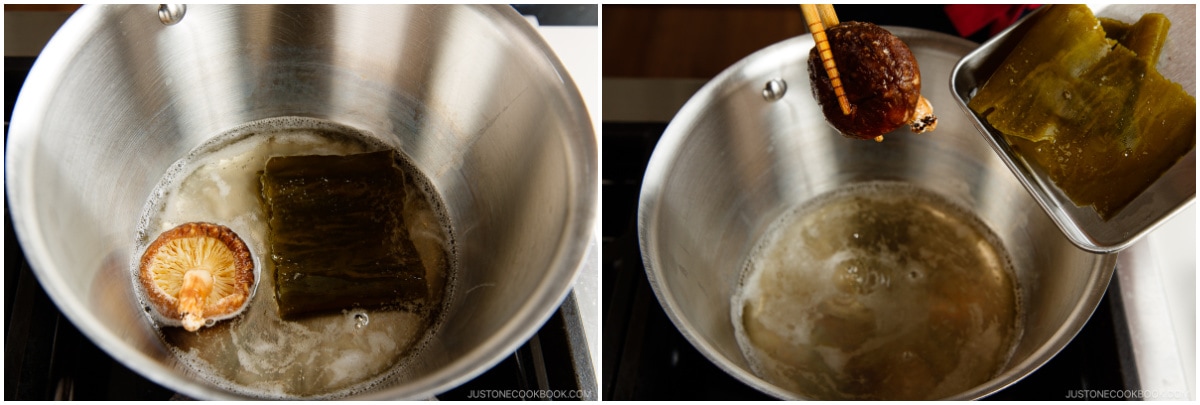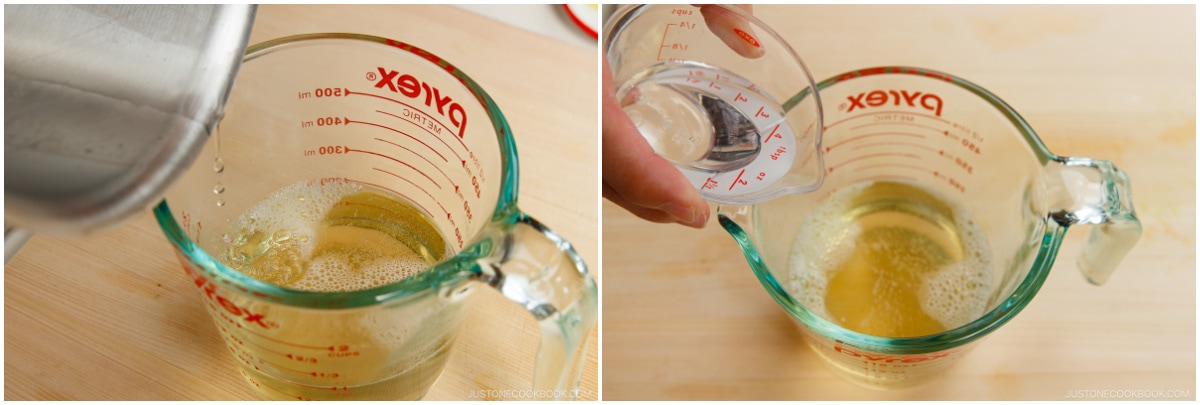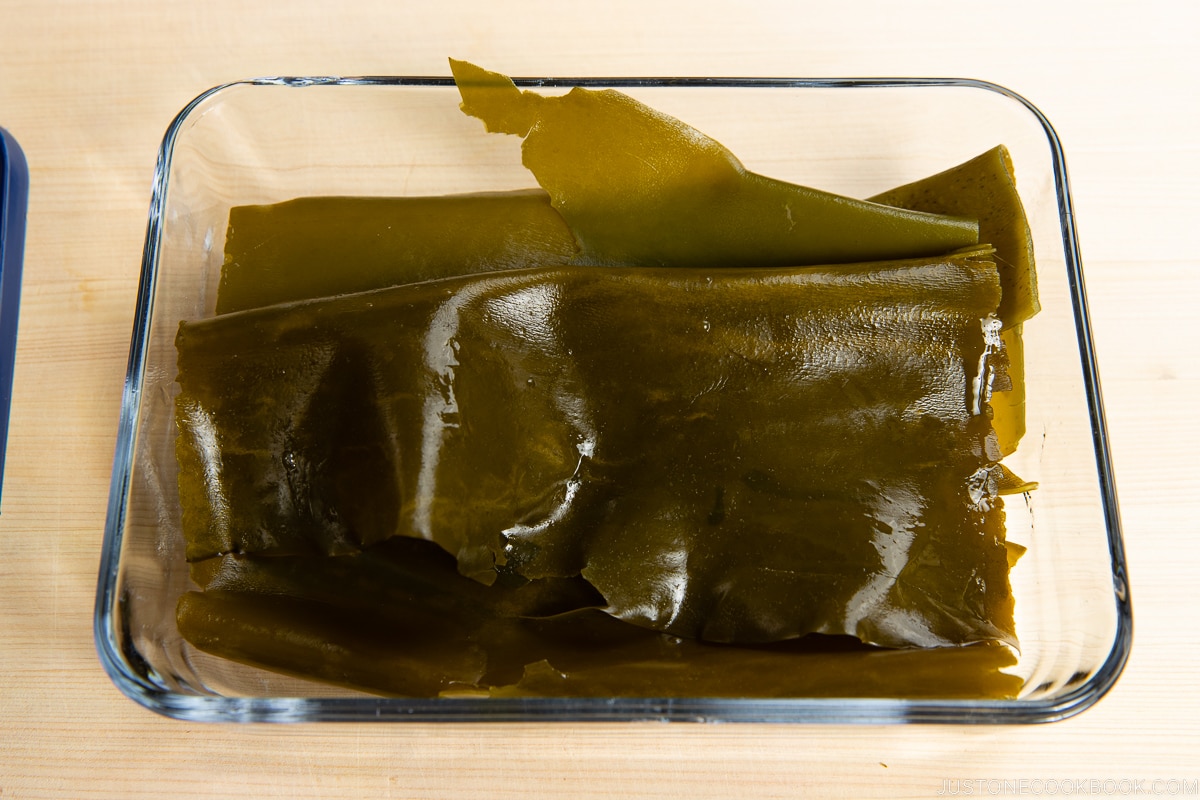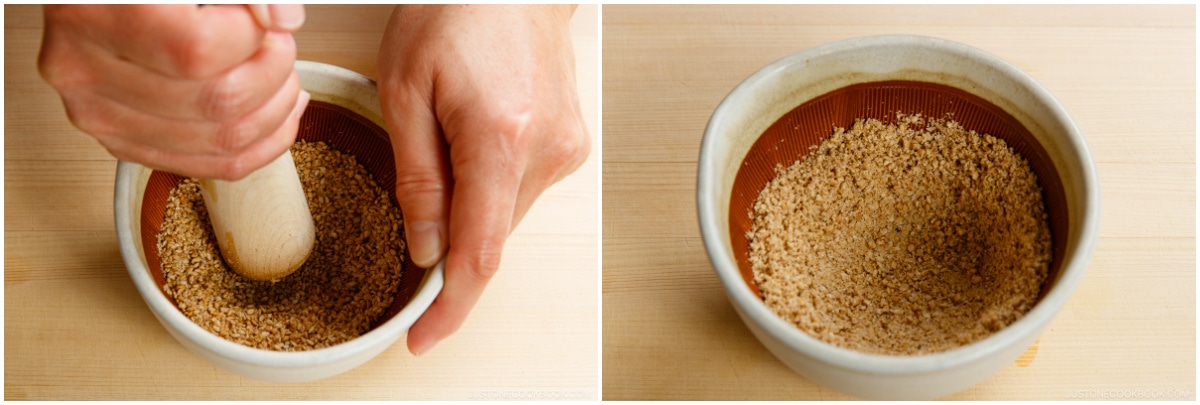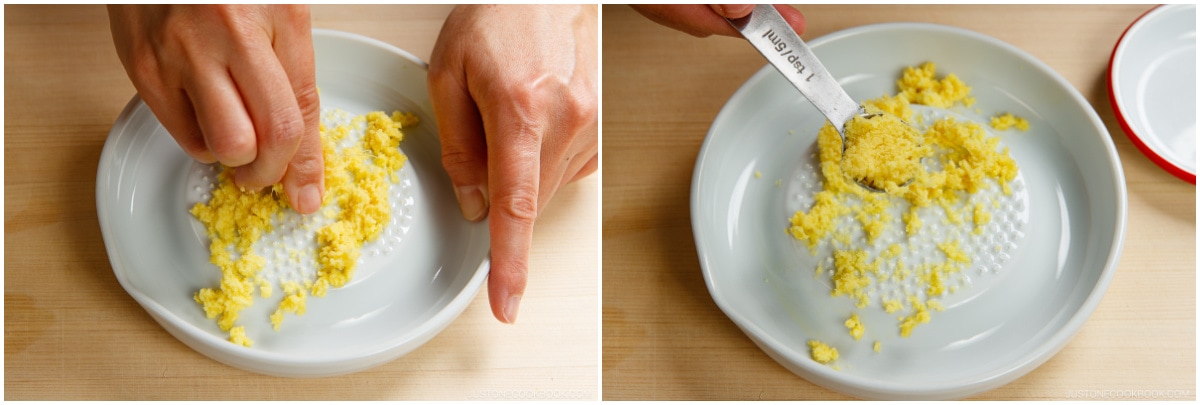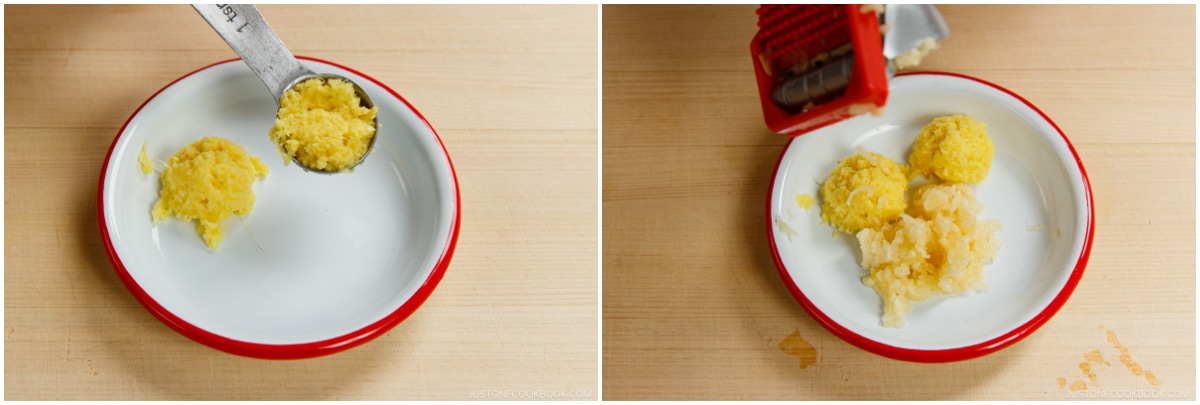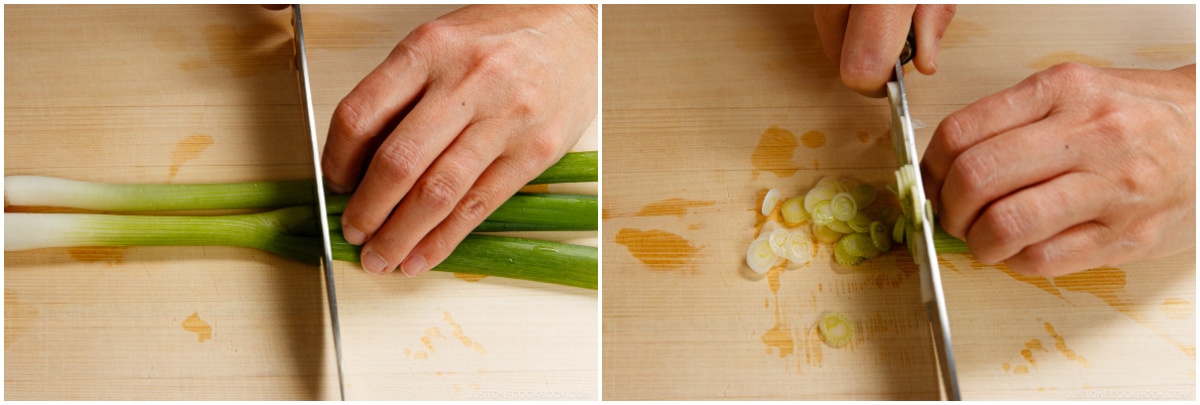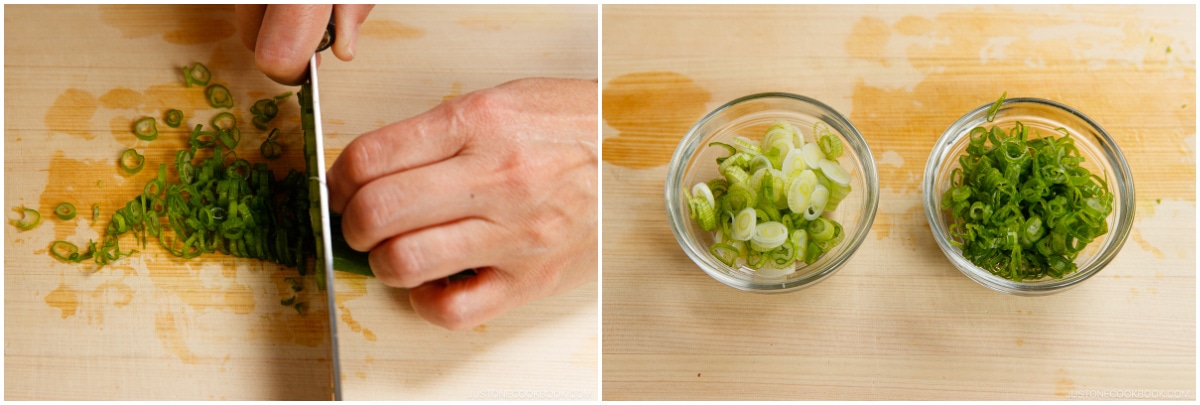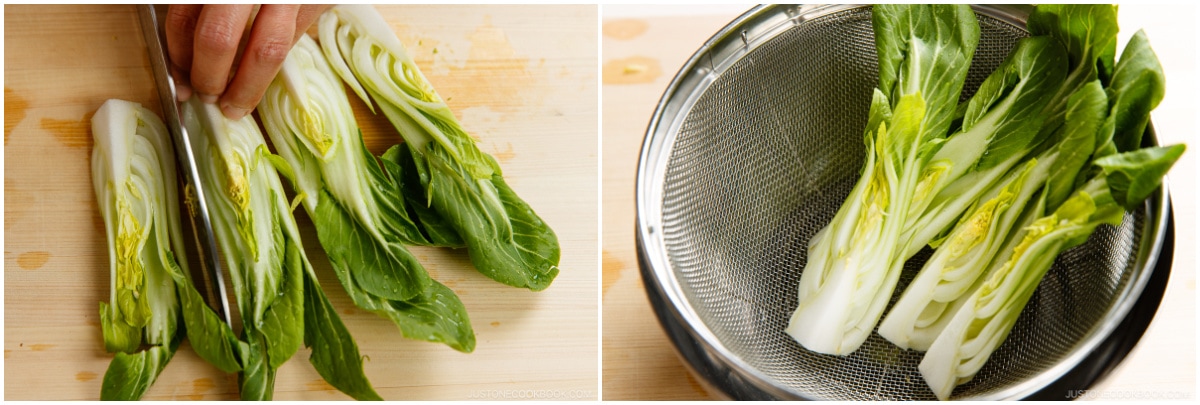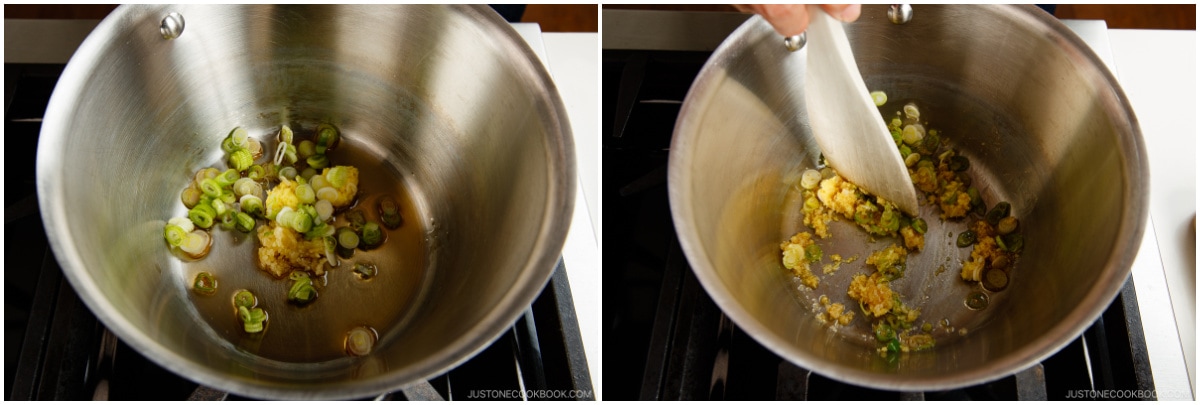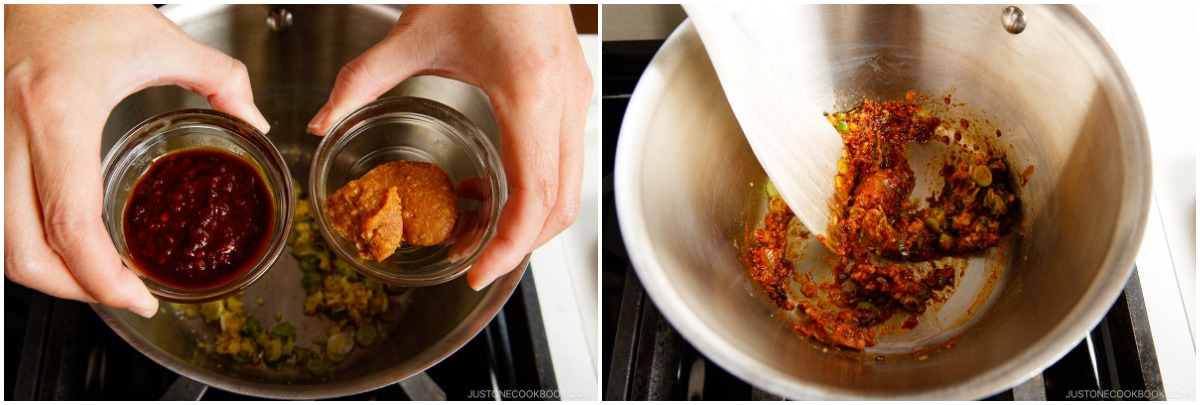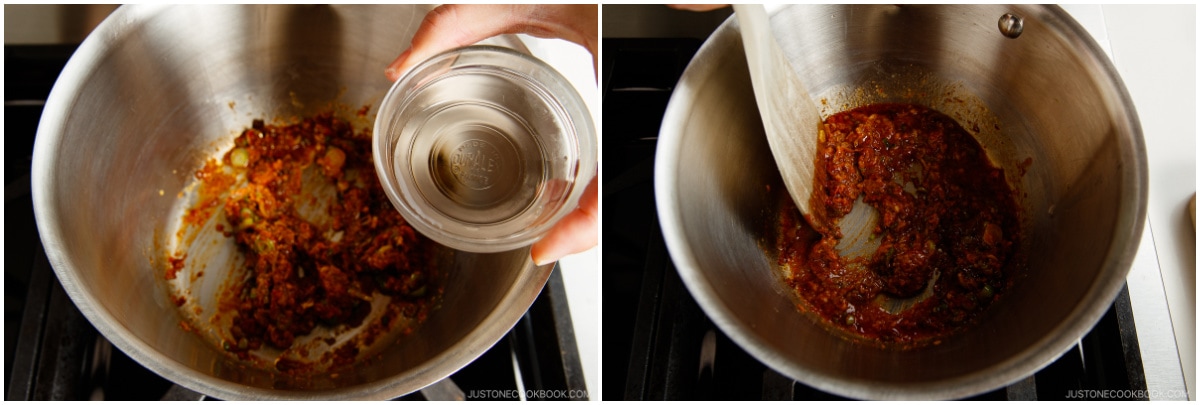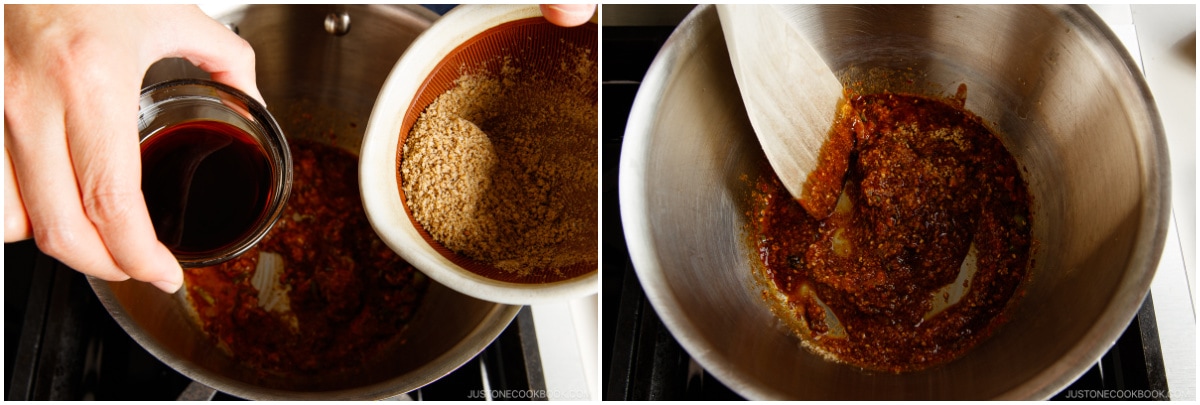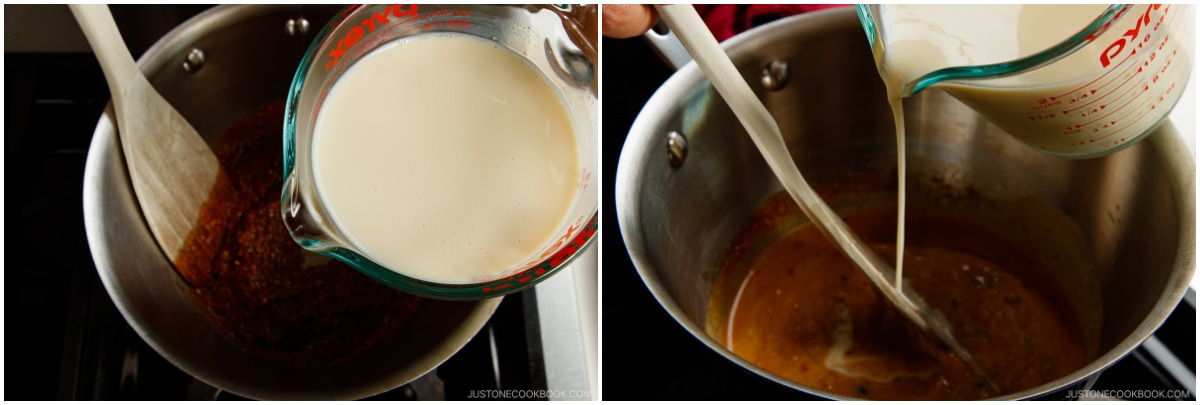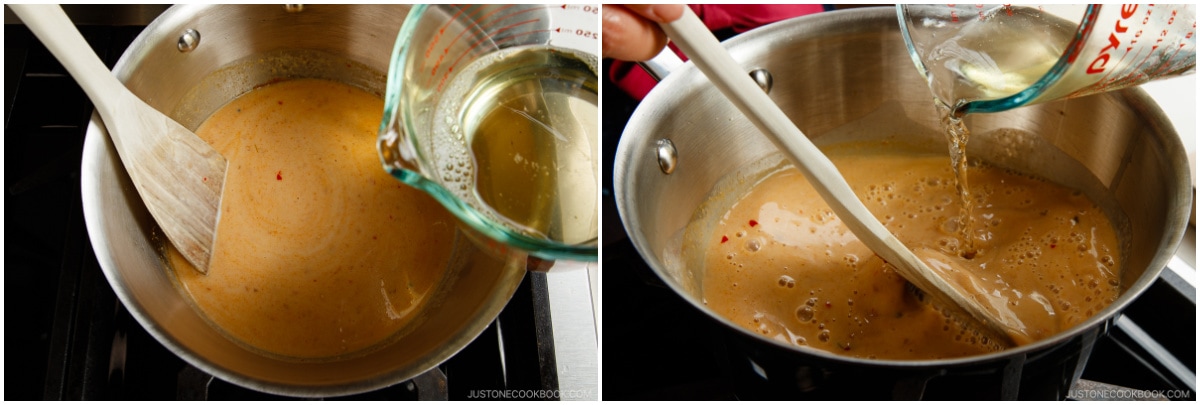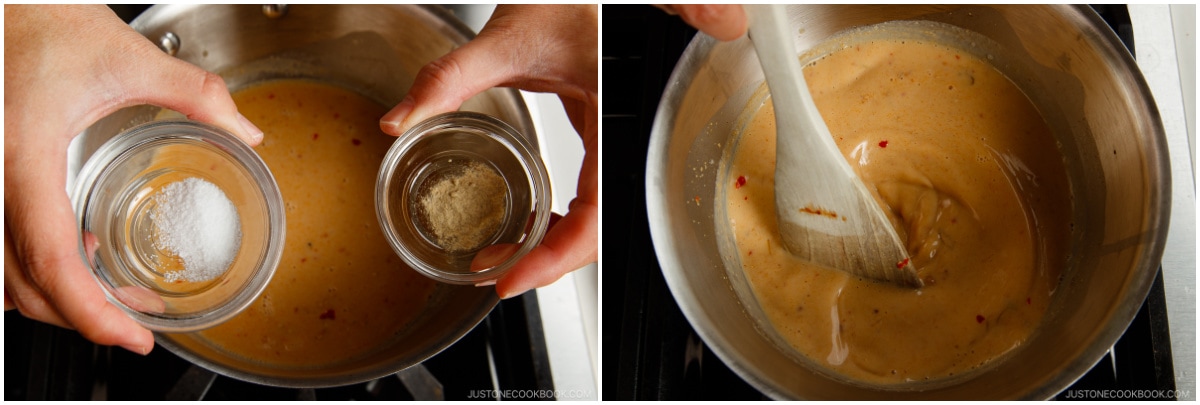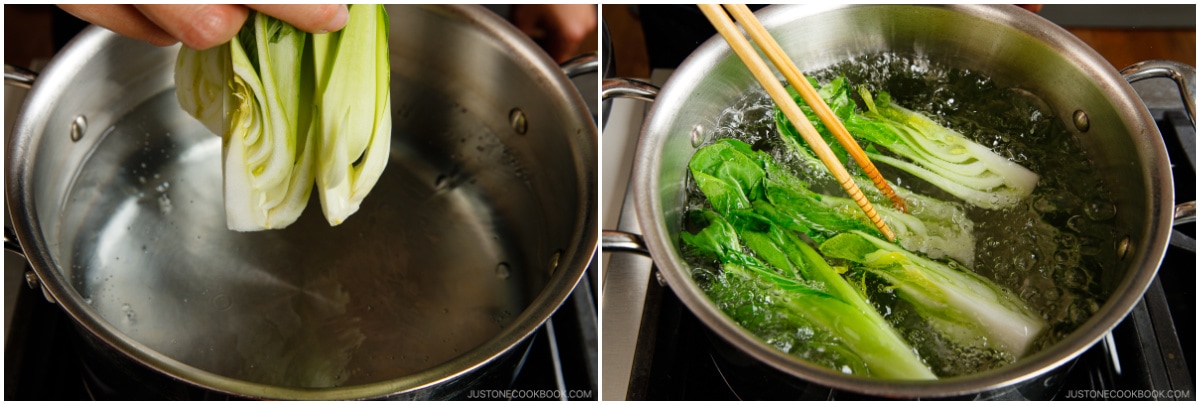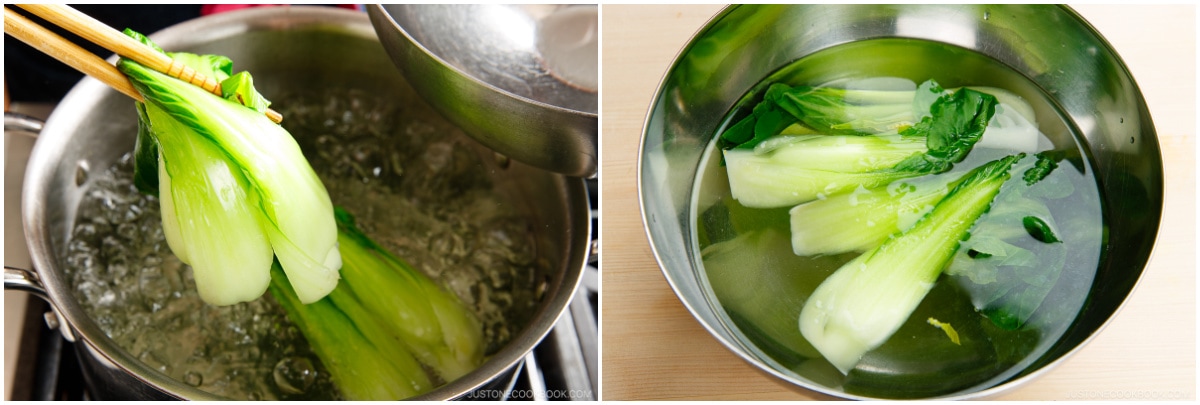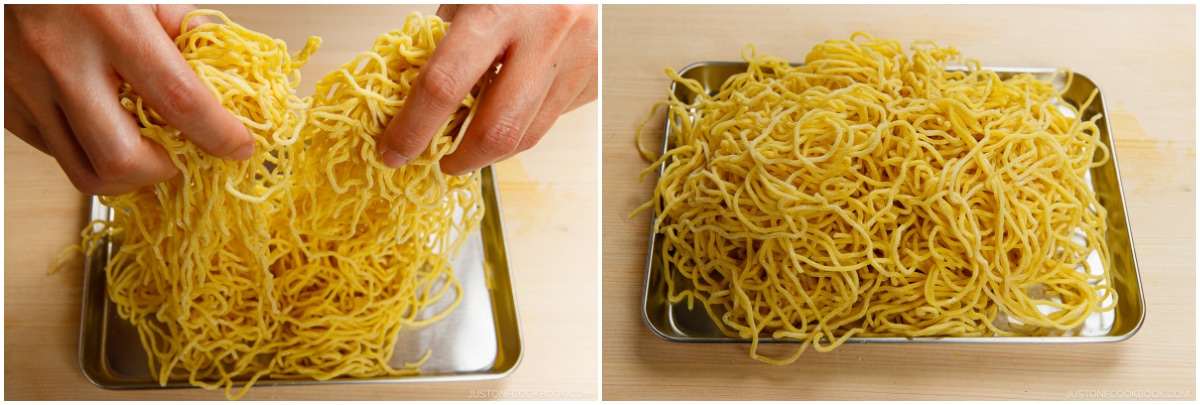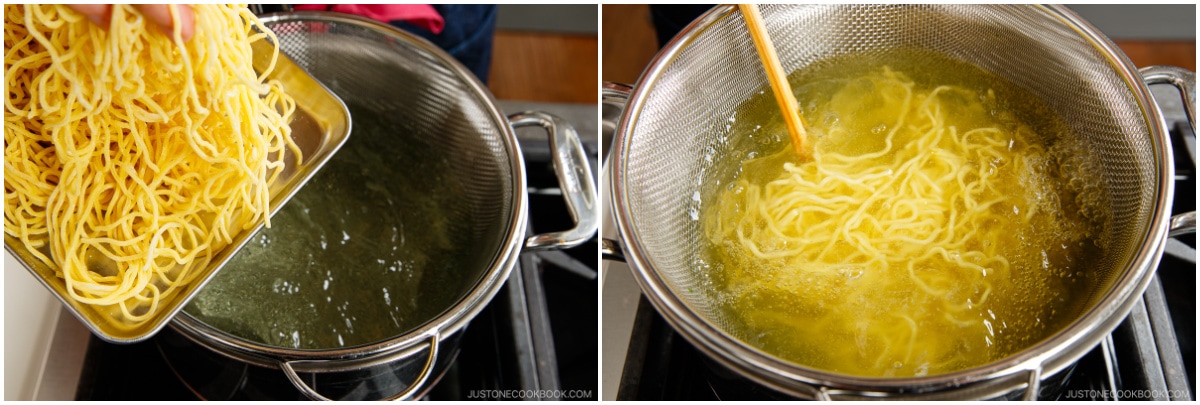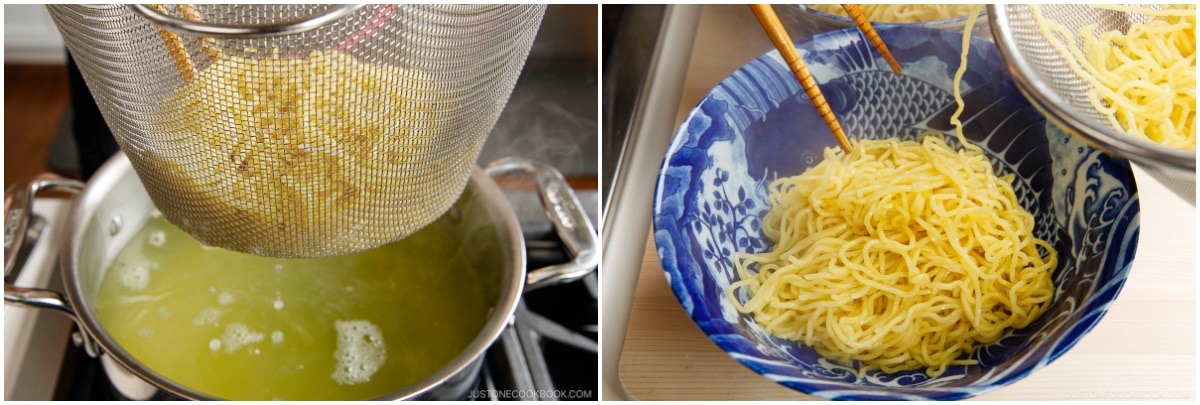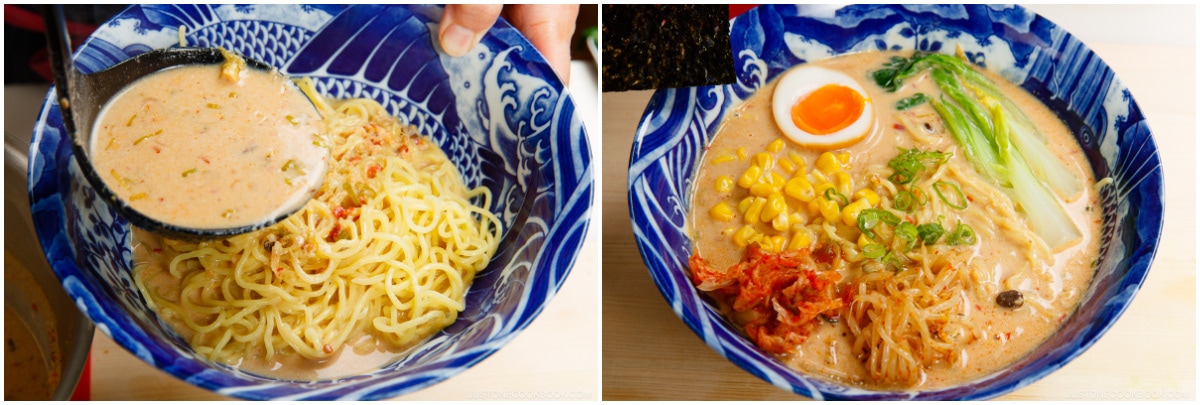Can we replicate the depth of flavor found in traditional meat-based ramen broths with a vegetarian alternative? My answer: Absolutely YES! You can create a hearty vegetarian ramen at home that rivals the richness of tonkotsu broth. And this recipe is all you need. Since sharing this Vegetarian Ramen recipe in 2015, it’s become one of our all-time most popular recipes. I hope you continue to enjoy this amazing ramen, and thank you so much for the generous reviews you’ve given me.
About This Vegetarian Ramen
I developed this recipe after tasting the exceptional vegetarian ramen at Towzen (formerly Mamezen) in Kyoto, a renowned plant-based ramen establishment celebrated for its Tonyu Ramen, or soy milk-based ramen. Their luscious, creamy broth was amazingly good, proving that the right plant-based ingredients can yield remarkable flavors. I felt like I had unlocked the secret codes and had to share the recipe with all the ramen lovers out there. You’d be hard-pressed to believe that this umami-packed vegetarian ramen is entirely meat-free! Let’s take a look below at what you need to make this ramen.
4 Key Ingredients for the Soup Broth
The following 4 ingredients are very important to make a bowl of authentic vegetarian ramen broth Please do not substitute.
1. Soy Milk
To create a vegetarian ramen broth that is smooth, rich, and creamy, the secret lies in plant-based soy milk. The use of soy milk also adds color, depth, and a hint of delicate sweetness that rounds up the flavor of the soup. Hopefully, even if you’re not vegetarian, I could convince you to try this rich and creamy delicious ramen by the end of this post. The best part? The soup broth takes less than 20 minutes to make!
2. Vegan Dashi – Umami Packed Broth
To make umami-packed broth, we’ll make Vegan Dashi (精進だし) with kombu and dried shiitake mushroom. Both ingredients are packed with umami substance and they are essential for this recipe. If you’re not vegetarian/vegan, you can use Awase Dashi (with kombu and bonito flakes) and/or chicken stock instead.
3. Miso
Miso (味噌) is a Japanese fermented soybean paste and the tub shown above is my favorite brand of miso. There are different kinds of miso and if you are not sure which one to pick, get Awase miso (the combination of red + white miso) or Koji miso (my favorite). They work great for almost all recipes that call for miso. More about miso on this page.
4. Doubanjiang (Spicy Bean Paste)
To make a vegetarian broth that is robust in flavor, doubanjiang (豆板醤) or spicy bean paste is a necessary ingredient. Doubanjiang is a combination of fermented broad beans, soybeans, and hot chilies. The salty, savory, umami-rich paste adds an incredible depth and character to the broth that you should not substitute. You can add more if you like your soup to be spicy, but a small amount would be enough to give it a good kick. Did you know that there is non-spicy doubanjiang? Taiwan, Hong Kong, and Guangdong in China have non-spicy doubanjiang. It has the same savory depth but without the heat. When the kids were small, I used non-spicy doubanjiang to make my Mapo Tofu. Taiwanese brands like Kangshan (岡山) (shown above) and Ming Teh (明德) offer the doubanjiang made from fermented broad beans and soybeans, and they usually have both spicy and non-spicy versions.
Ming Teh Doubanjiang (non-spicy) Kangshan Doubanjiang (non-spicy) – Walmart Kangshan Doubanjiang (non-spicy) – Weee!
Doubanjiang Substitute: If you really can’t find doubanjiang, you can use gochujang (Korean chili paste; spicy) or doenjang (Korean soybean paste; non-spicy). However, please keep in mind that these pastes will yield slightly different flavor profiles.
Fresh Ramen Noodles
Fresh ramen noodles are made from four ingredients: wheat flour, water, salt, and kansui. Despite the yellowish color, the noodles do not contain eggs. Kansui, an alkaline solution, is what gives ramen its yellow tint and springy texture.
Ramen noodles are either straight (ストレート麺) or wavy (ちぢれ麺). Generally, straight noodles are used for tonkotsu ramen while wavy noodles are used for soy sauce ramen, salt ramen, and miso ramen, but of course, there are exceptions. Ramen noodles have 6 different thicknesses: ultra-thin (極細麺), thin (細麺), medium-thin (中細麺), medium-thick (中太麺), thick (太麺), and extra thick (極太麺).
Where to Buy the Ramen Noodles
Big Japanese grocery stores like Mitsuwa, Nijiya, and Marukai (Tokyo Central) sell packages of fresh ramen noodles (with or without soup packages included). Some large Korean and Chinese grocery stores also carry packages of fresh ramen noodles from Myojo and Yamachan Ramen. Sun Noodles make great noodles and they ship domestically! If you are looking for gluten-free noodles, check out my favorite vegan-friendly ramen noodles by Gluten Free Meister (Kobayashi Seimen).
Various Ramen Toppings
If you want to stick with the traditional ramen toppings, I recommend:
Ramen egg (skip for vegan) Scallions (green onions) Sweet corn Wood-ear mushrooms Menma (seasoned bamboo shoots) Bean sprouts (I used my Spicy Bean Sprout Salad today) Seaweed (nori)
However, feel free to enjoy your ramen with what you have on hand. You can use any ingredients that complement the ramen broth and ramen noodle texture. Some of the examples that go well with your ramen include:
Homemade vegetarian kimchi (I recommend my friend Seonkyoung’s vegan kimchi recipe) Blanched Shanghai bok choy, baby bok choy, or spinach Colorful veggies like julienned carrots Deep-fried tofu Shelled edamame
There is plenty of flexibility to work with!
How to Make Vegetarian Ramen
Ingredients You’ll Need
Toasted white sesame seeds Aromatics including garlic, ginger, and scallions Roasted sesame oil Doubanjiang (spicy chili bean sauce/broad bean paste) (more below) Miso (more below) Sake Soy Sauce Vegan dashi made with water, kombu, and dried shiitake mushrooms (more below) Unsweetened soy milk (more below) Salt and white pepper powder Fresh ramen noodles (more below) Toppings: Blanched Shanghai bok choy, Ramen Eggs (skip for vegan), vegan kimchi, sweet corn, Spicy Bean Sprout Salad
Overview: Cooking Steps
If You’re Not Vegetarian or Vegan…
If you are not vegetarian or vegan, you can cook 4 oz or 113 g of minced pork (for two servings) after stir-frying the aromatics (ginger, garlic, and scallion). The meat will give more complexity to the soup broth. You can also add Chashu as a topping. The bottom line is to use my recipe as a guide and create your own version!
What to Serve with Vegetarian Ramen
Vegetable Gyoza Homemade La-Yu Yakitori-style Grilled Vegetables Spicy Edamame Pickled Mustard Greens Fried Rice (Takana Chahan)
I hope this Vegetarian Ramen will be your go-to recipe. Once you’ve tried it, leave a comment below and let me know how it goes. How long does it take to make this vegetarian ramen? Really fast! If you prepare the cold brew dashi in advance, you can make this ramen in 30 minutes from start to finish. Make sure to read the recipe and understand the process ahead of time. Is Soy Milk Ramen (Tonyu Ramen) always vegetarian/vegan? No. When you visit Japan and order Soy Milk Ramen or Tonyu Ramen, make sure that it is vegetarian/vegan. Tonyu ramen is not necessarily vegetarian or vegan-friendly in Japan. “Soy milk” in the ramen is considered one of the flavor options like miso, shoyu (soy sauce), and shio (salt). It’s easier to spot meat as a topping, ask if the soup broth are made with pork bone (Tonkotsu 豚骨), chicken carcass (Torigara 鶏ガラ), bonito flakes (Katsuobushi 鰹節), or other types of fish (such as ago アゴ). Is it easy to find vegetarian ramen in Japan? Vegetarian ramen is not typically found on the standard menus that ramen shops offer. However, with the increasing number of foreign tourists, you’ll be able to find more vegetarian and vegan options in larger cities. Check or ask in advance. Are ramen noodles vegan? The traditional ramen noodles are made with wheat flour, salt, water, and kansui, and they are vegan. But not all ramen noodles are vegan. Occasionally, some ramen shops create noodles with eggs. So, you should definitely ask or check the ingredients.
More Delicious Ramen Recipes You’ll Love
Miso Ramen Shio Ramen Spicy Shoyu Ramen Tan Tan Ramen (Tantanmen) Tan-Men (The Easiest Ramen Soup Noodle)
Wish to learn more about Japanese cooking? Sign up for our free newsletter to receive cooking tips & recipe updates! And stay in touch with me on Facebook, Pinterest, YouTube, and Instagram. Editor’s Note: This post was originally published on Nov 18, 2015. It was updated with new pictures, an updated recipe (for two servings, instead of one), and more helpful content on April 9, 2023. It has been republished with a new video on October 20, 2023.
